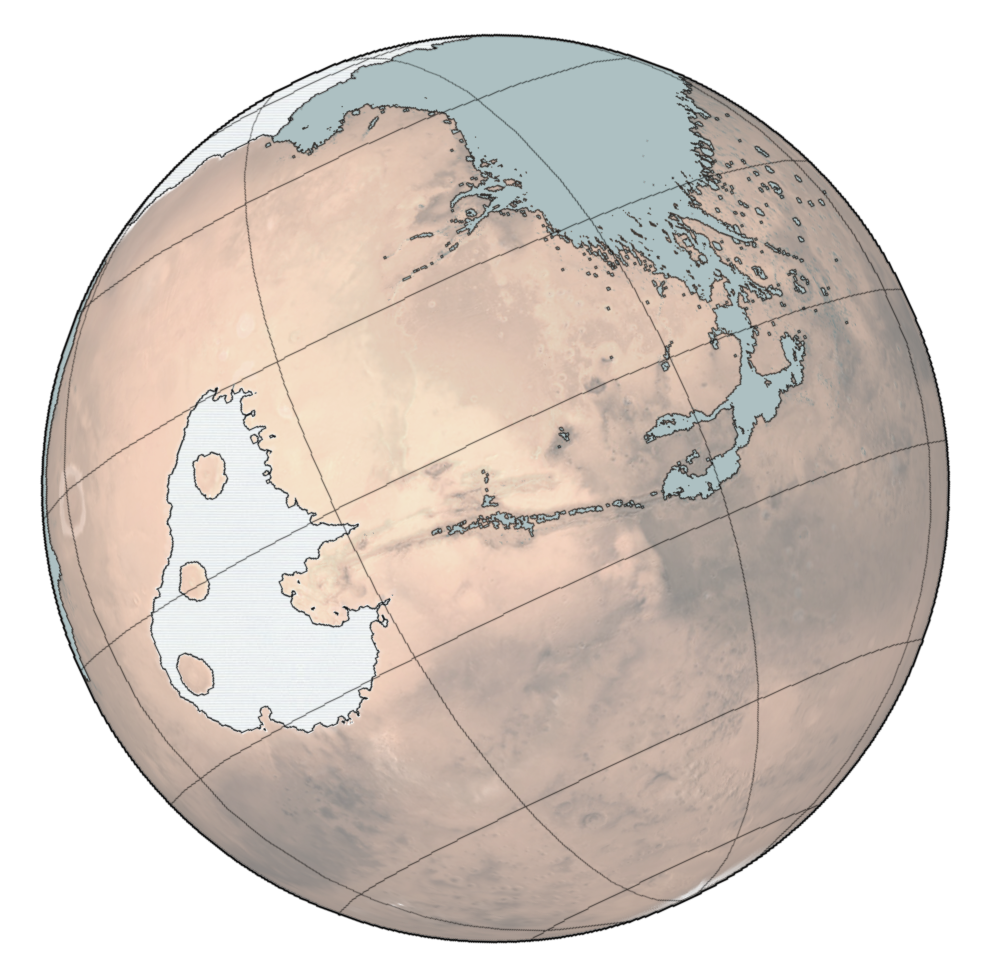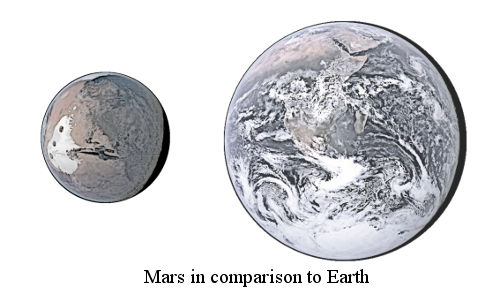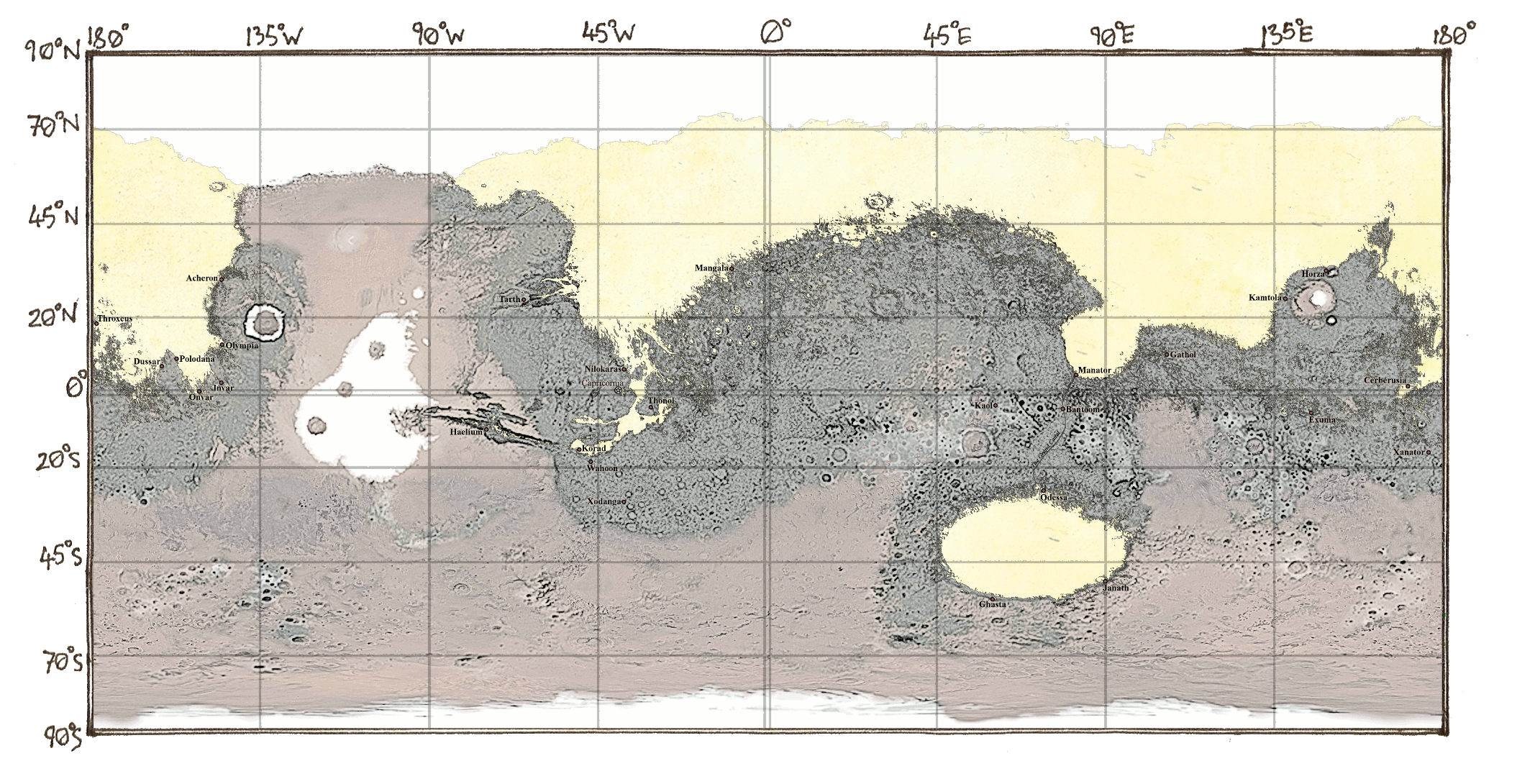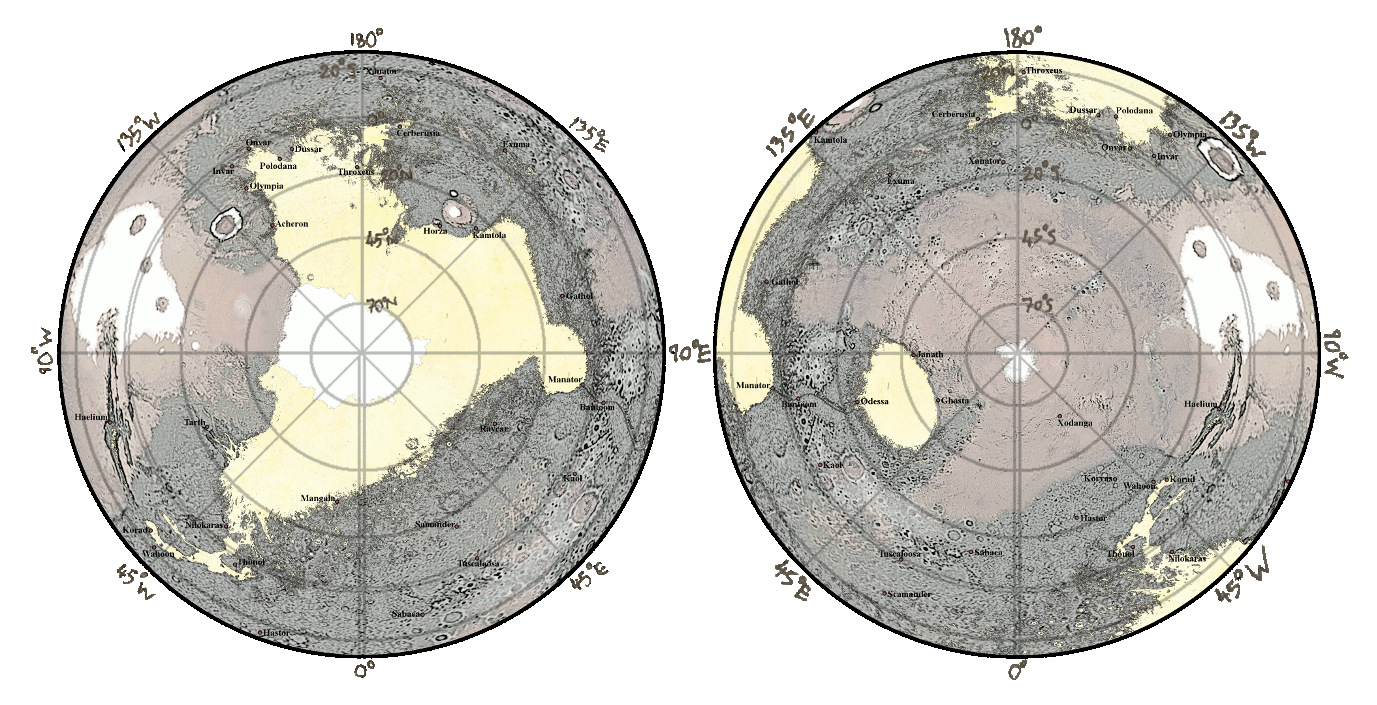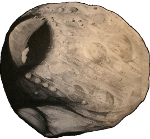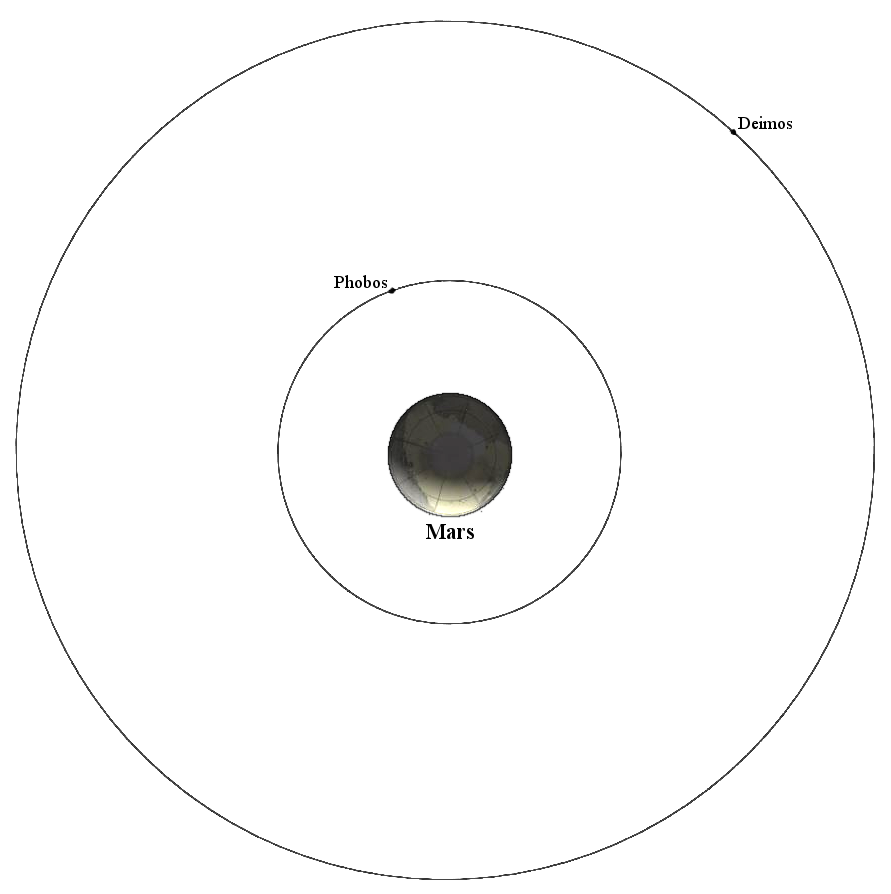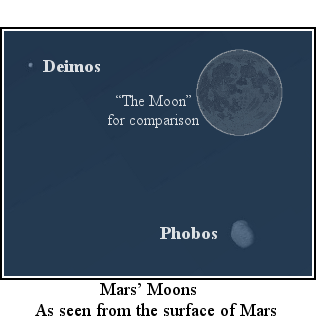Originally a cold, red, dusty, desert planet with a thin atmosphere, Mars occupied the minds of men for thousands of years as the bright, red wanderer in the sky. In fact, when Man built his first rockets and conquered outer space, it was the Red Planet that would eventually become the first planet beyond the Earth that Man would set foot on, less than a century after the launch of Sputnik.
Early colonisation efforts would come to halt, however, in the early 22nd Century A.D. when civilisation on Earth was destroyed in the fires of Nuclear Holocaust. Mars would remain abandoned for nearly a thousand Terran years until civilisation was rebuilt on Earth. And in the 31st Century, Man once again returned to the Red Planet, this time to terraform the world - transforming it, over the course of two centuries, into one hospitable to human beings with open bodies of water, vegetation, and a breathable atmosphere.
After the Terraformation, Mars became a cool, habitable planet dominated by dry steppes and cratered shrublands with sparse forests and farmlands in areas near the coast. Cold, red deserts still dominate in expansive areas further away from the planet’s small seas, and high upon the tops of the planet’s massive dome volcanoes remain areas that are practically unchanged since before Man’s arrival.
Throughout the long millenia of the Terran Autocracy, Mars would exist as a sort of backwater planet in the Solar System with a small population of millions in contrast to Earth’s dozens of billions, but would still have an important role to play in the Solar System’s history...
Go to: The History of Mars
|
|
